People have various interests. It's what makes us all unique. Often, even friends through shared interests are completely different in terms of personalities, principles, and other interests. But these added quirks make people interesting and make friendships work. But what if your friend was like Sydney Smith?
The American entrepreneur had a lifelong obsession with elongating her neck. She thus spent five years wearing rings around it to make this possible. She was dubbed the Giraffe Woman by the media and even made famous in a popular TV show. Here is the story about her obsession with wanting a long neck.
Why Want A Longer Neck
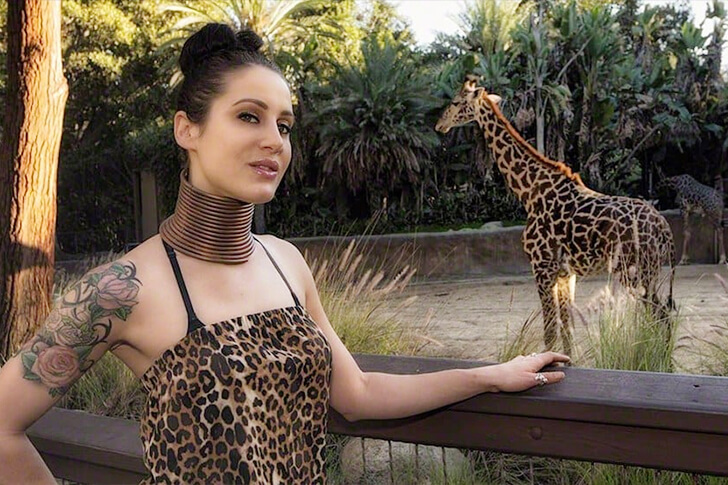
People express themselves in various ways, from musical talent to dancing, acting, and singing. Then there is body modification. This includes, but is not limited to, tattoos and piercings, but also goes as far as stretching the ear lobes and even bodybuilding. For Sydney Smith, this came in the form of elongating her neck.
Why would someone choose such an extreme method of expression? Some people would say it was for attention, others would say to test the limits of the human body, but for Smith, while she wanted all of those things, this was actually something that had been coming on for a long time.
An Obsession She's Had Since She Was A Little Girl
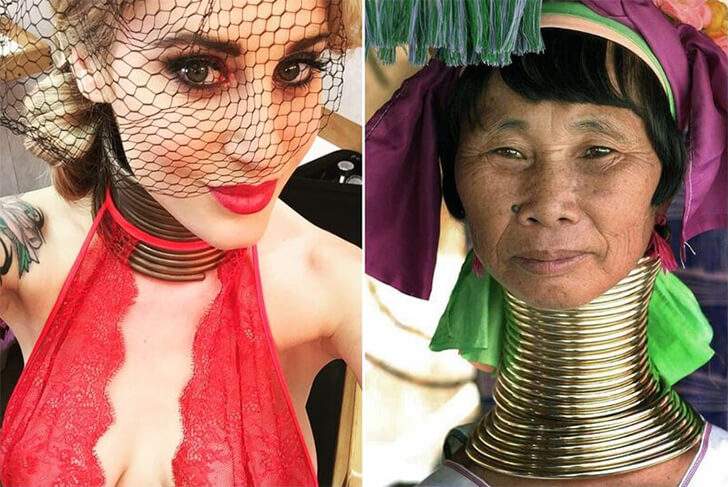
When she started fantasizing about having a longer neck, Sydney was only a little girl. Her interest in it began thanks to her passion for reading. She read anything she could get her hands on; often, this was anything from the newspaper to magazines. One of the magazines she often ran into at home was National Geographic.
National Geographic is one of the most popular magazines in the world. The first issue was published way back in 1888 and was initially only for scholars, reaching 165 members. Now it is a public magazine that is accessed by 40 million people monthly.
So What Did She See In The Magazine That Influenced Her Obsession
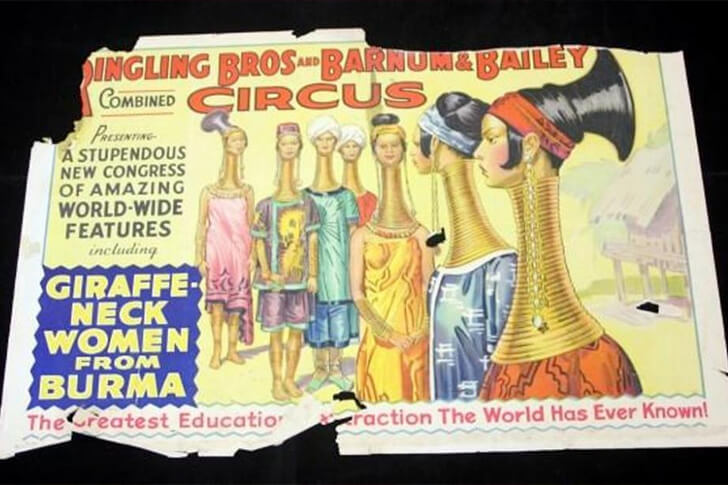
While in middle school, Sydney Smith opened the National Geographic magazine that would change her life. This magazine contained an article and images of women from Thailand and Burma in Southeast Asia. The pictures in the magazine were mainly centered around a native tribe from these regions.
The tribe in question was the Kayan tribes and, in particular, the Kayan Lahwi. These tribes are fascinating, and what grabbed Smith the most, though, was an eye-catching and unique thing that the women of the tribe were doing with a brass coil around their necks. She was so fascinated by it that it developed into an obsession.
A Mystifying Tradition and Culture

The rings are worn by the women of the tribe for the rest of their lives from a young age. It is said that girls as young as five years old get their first one around their necks. As the female grows older, these are made longer by adding more brass coils to fit the girl's neck.
This is the most common way to identify Kayan Lahwi women. There are several factions of the Kayan tribes beyond the Lahwi. This includes Kayan Ka Khaung, Kayan Lahta, Kayan Ka Ngan. Kayan Gebar, Kayan Kakhi. There is another faction called the Bwe people.
The Mursi Lip Plate
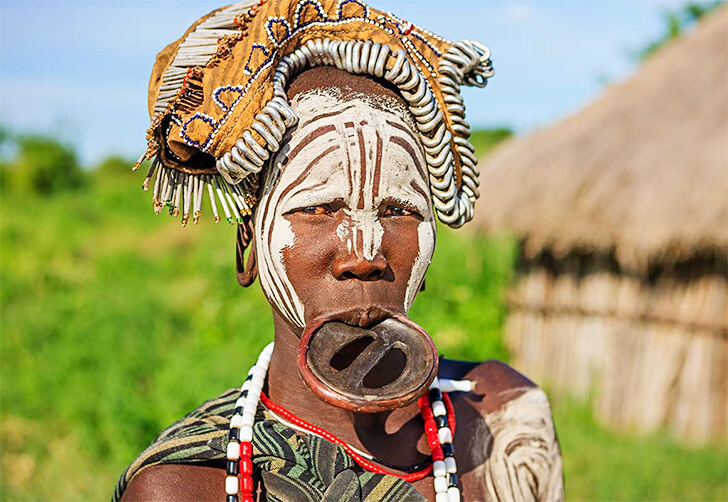
The Kayan Lahwi tribe isn't the only one where body modification is a goal for women. The Mursi tribe in Ethiopia is renowned for their women donning extravagant lip plates. This is a ritual linked to marriage, with the woman's lip being pierced while preparing for her wedding day.
Lip plates are added and get bigger and bigger as time passes. This is believed to be done because the stretched lips are supposed to make the women look more attractive. A similar process is done to the ears as well. This ear lobe stretching is also practiced in western society.
It's About The Size Of The Plate
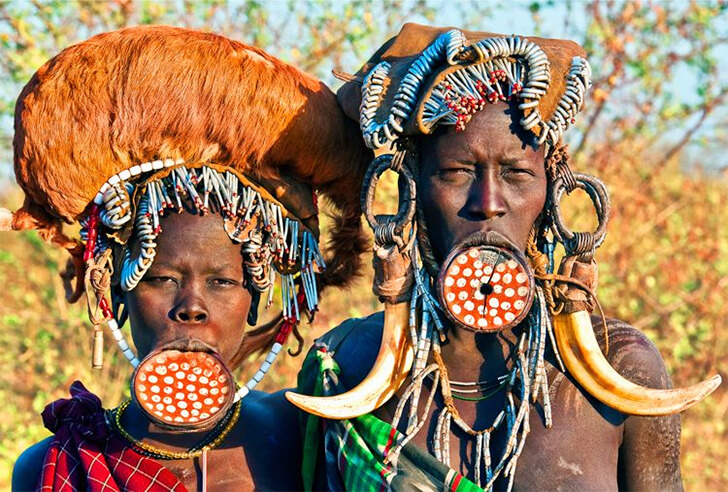
Besides the belief that it's a sign of beauty, there are various other reasons believed to be why this tribe has gone for this type of body modification. Another reason touted by anthropologists Beckwith and Carter claims that the size of the plate is linked to the price of the bride.
Others have denied this, especially David Turton, who spent 30 years studying the tribe. Another Anthropologist, Shauna LaTosky, claims that the value of the plate gives an idea of the strength and esteem the woman is held in. These plates can range from 3 inches to 7 inches in diameter.
Another Reason For The Long Neck Obsession

Something that probably further fueled her obsession was that she had a soft spot for giraffes. This was another childhood obsession, and she even had items with giraffe prints and designs on them and giraffe cuddle toys and other items. This must have linked her fascination between the tribe and her long-necked favorite animal.
As a youth, she would visit the zoo constantly and spend lots of time marveling over her long-necked favorite animal. Seeing what she had seen in the magazine made her believe that she could become like a giraffe, whose neck was the one body part she admired the most.
But Why Wear The This Contraption?
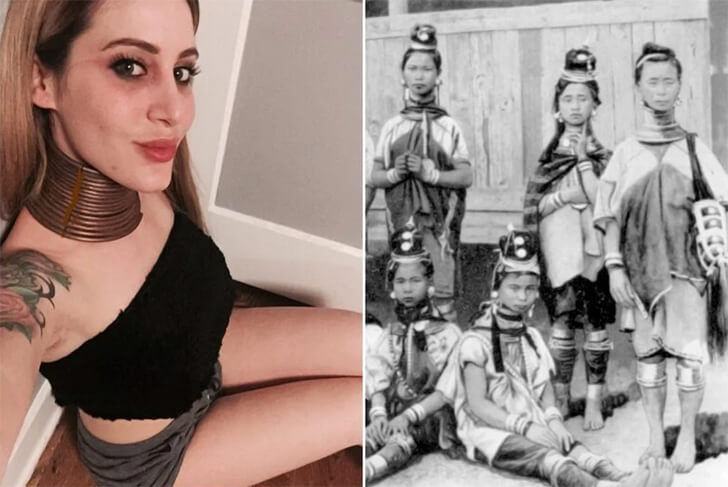
There are several reasons why the Kayan Lahwi women wear the rings around their necks. One of these is that it's used as a mechanism to make the women undesirable to men from other Kayan tribes. This protects them from being put into slavery. It has also been linked to folklore, said to make the women resemble dragons.
While dragons are an important part of the Kayan Lahwi folklore, another essential factor in attracting partners. This has been hypothesized to be another reason, with the longer neck believed to make women come across as more sensual. When asked themselves, Kayan women link it to their cultural identity.
Getting A Start On Her Big Dream
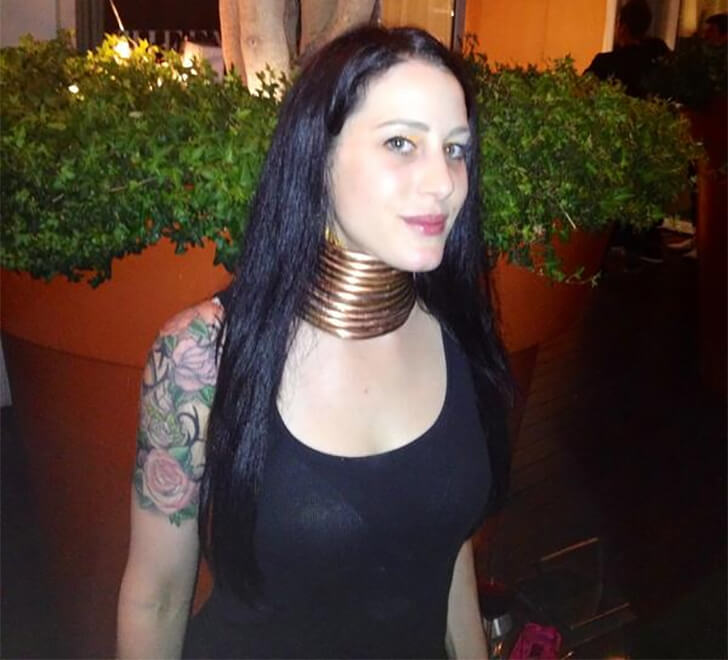
As a youth, Smith was both impressionably curious and experimental. She also wasn't afraid to make things happen on her own, and she went the DIY route to get coils around her neck like the pictures she saw in the National Geographic magazine. Her tool? Coat hangers from her closet.
She would twist them into sloppy curls around her neck and then model in the mirror. Although her parents weren't as enthusiastic, she was proud of her achievements and often just shrugged their shoulders when she brought up her admiration for this process. In the end, they didn't realize the lifelong obsession they were dealing with.
This Wasn't Just A Fad
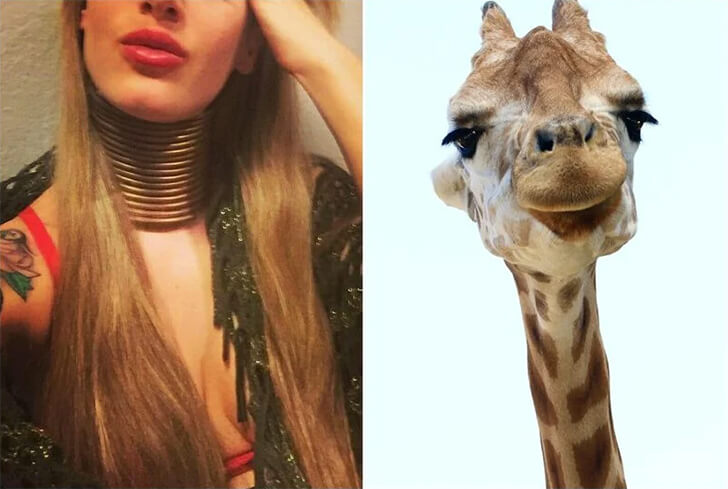
The cut-up coat hangers appeared to be working, and every night Syndey Smith would sleep in them. Her next seemed to be getting longer, and her peers even started calling her the Giraffe Girl because of this, but this wasn't the attention she was truly after.
Of course, that is because not all of this attention was positive, with her peers often picking on her for her now unusually long neck. She eventually stopped using the rings, opting instead to evaluate whether this was what she wanted and if it was worth it. Of course, she would end up putting them back on again.
Scarred For Life
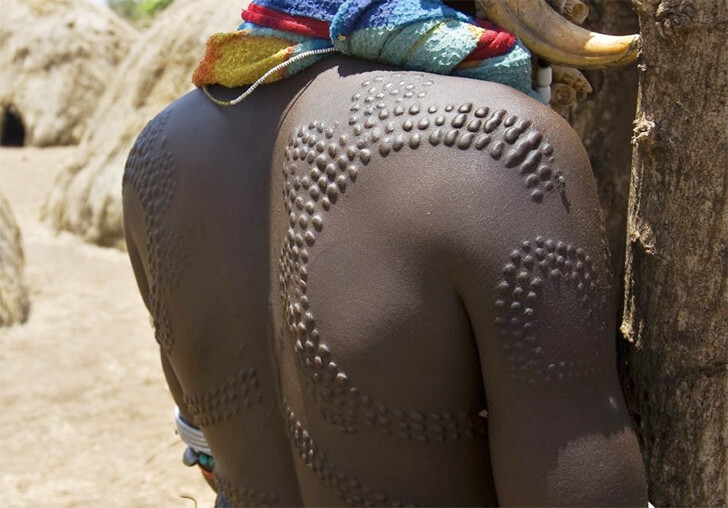
Several tribes in Northeast Africa practice the painful art of body scarring. This tradition of being cut so that the scar swells and stays is a way of showing anything from age to wealth to status in the tribe. Of course, scars heal over time, and to keep these, tribesmen need to maintain the cuts.
Hence it is said that people who maintain these scars over a long period also garner great respect from their fellow tribespeople. It's also said that this makes men more appealing to the opposite gender. Some of the tribes who practice this include the Dinka, Nuer, Surma, Shilluk, and Toposa, among others.
Scarring In The Modern Era
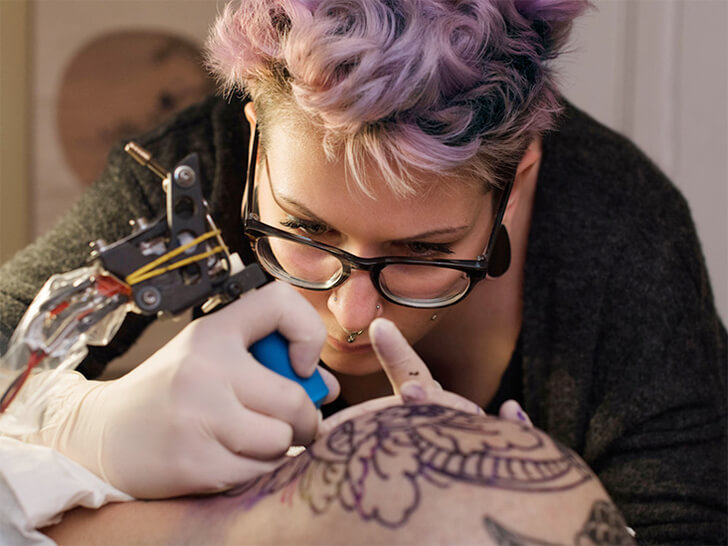
This practice has continued into modern times, and some more safe and modern tools and methods are used to do it. It even has a different name, going by the title scarification, and has become many people's alternative to tattooing.
This is done either by cutting in with a scalpel or using a cauterizing tool. But the tool comes after the artist has laid down the design and created a stencil for it. Despite being described as less painful, this method is still illegal in some parts of the world, including Britain and some states in the United States.
The Safety Issues With Scarring
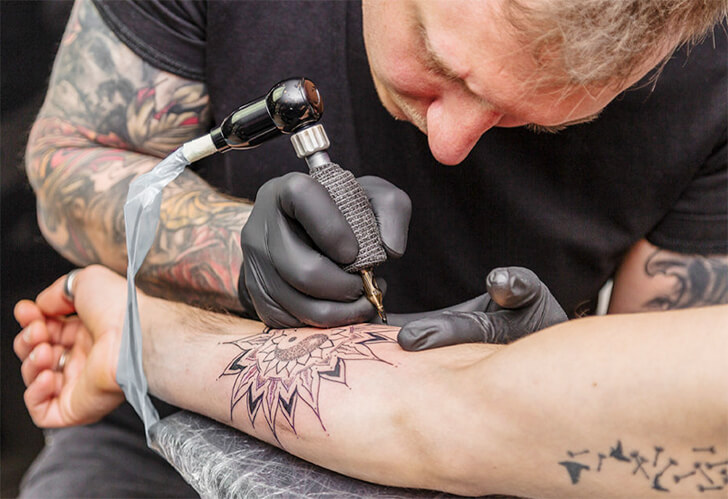
Despite having safer tools than its traditional tribal methods, scarring still has its safety issues. It's also illegal in the UK because it falls in the category of body modification procedures where people get hurt. Besides that, there are also other reasons why this is seen as unsafe; some of these are common while others are unique.
Hygiene is one of the issues and can be problematic if not followed with any procedure, from piercings to tattoos. Another is the risk of contracting hepatitis, which is also linked to the safety and sanitization of the tools used. These are, of course, all avoidable if the tools are sanitized.
Finding Inspiration In From Pop Stars

Like so many others trying to be unique, Sydney Smith was a huge fan of Lady Gaga. The pop star is renowned for her eye-catching outfits, uplifting songs, and penchant for pushing boundaries. This has made her an icon in the expressive and LGBTQI community, as well as a musical powerhouse.
But a particular Lady Gaga moment stood out for Smith. This was her famous meat dress incident at the 2010 MTV Video Music Awards. This was to make a statement about military applicants not needing to identify their orientation. Smith figured that if Gaga could go to those extremes for a cause, then so could she.
Neck Extension 2.0
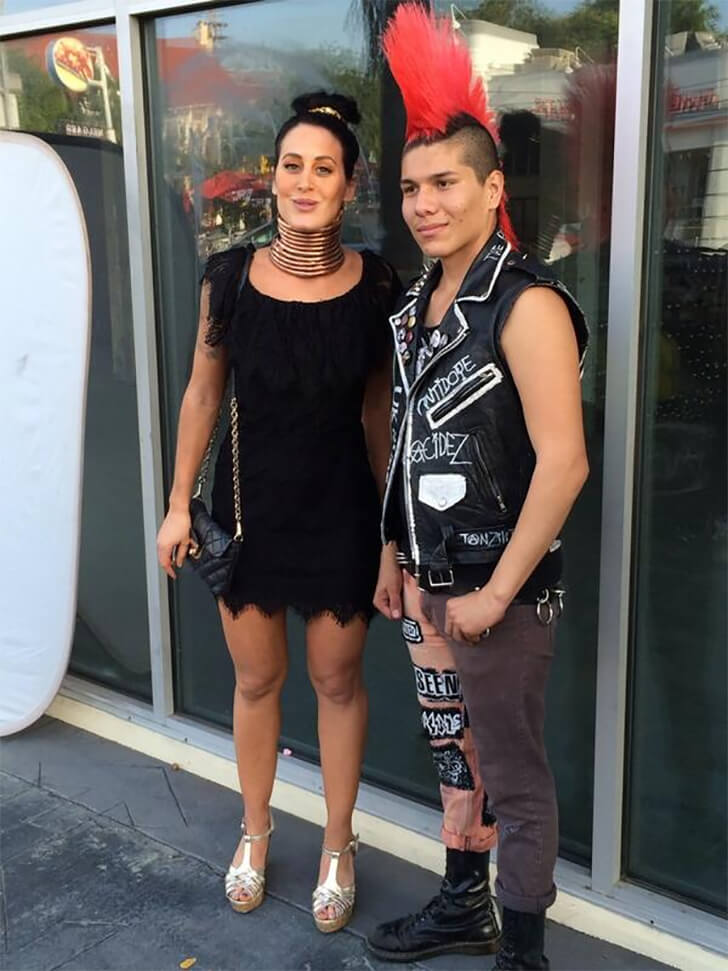
The year after Lady Gaga's meat dress incident, Sydney decided to give her neck stretching escapade another go. This time she wasn't going to do it with makeshift rings either. Instead, she got a friend to make them for her from scratch.
She had the first of these items put around her neck and soldered by her friend. She started with a small number of them but intended to push the boundaries of this transformation as far as she could. She was old enough to make her own decisions now, and she was planning on making the most of it.
There Were Some Teething Issues Though

Deciding to go for it is one thing, but what proves how dedicated someone is to a cause is sticking it through despite any of the unforeseen challenges that come with it. For Sydney Smith, this was an early bout of contact dermatitis. His caused her neck to develop a rash and was pretty uncomfortable in the early stages.
Metal allergies are not uncommon and are mostly linked to nickel. There are other offending metals, though, including cobalt, copper, and chromium are also common offenders. One that isn't cited often is brass, which is what the neck rings are usually made of.
Rushing The Process

The good thing about having a friend who could make the coils for her was that Sydney didn't have to go far to get more rings added to her neck. The downside of having a friend who could make these things for her was that she was impatient and forced him to make more.
This meant that she was adding weight to herself way before her body was accustomed to the added weight it already had to deal with. But she was aware of this and prepared to deal with the challenge. Mind over matter, as she put it.
Moving Fast But Coping

She may have been moving quicker than her body would allow, But she was handling herself pretty well. By her fifth year, she was wearing 15 coils, which amounted to about 5lbs of added weight to her neck and shoulders.
But 15 of them still pale compared to how many traditional Kayan Lahwi women wear. They can take their tally to over 20. There is no official number for most of them worn by a Kayan Lahwi or any woman for that matter. However, there are thousands of photos with women, some of them wearing up to 30 coils.
Another Culture With A Thing For Neck Rings
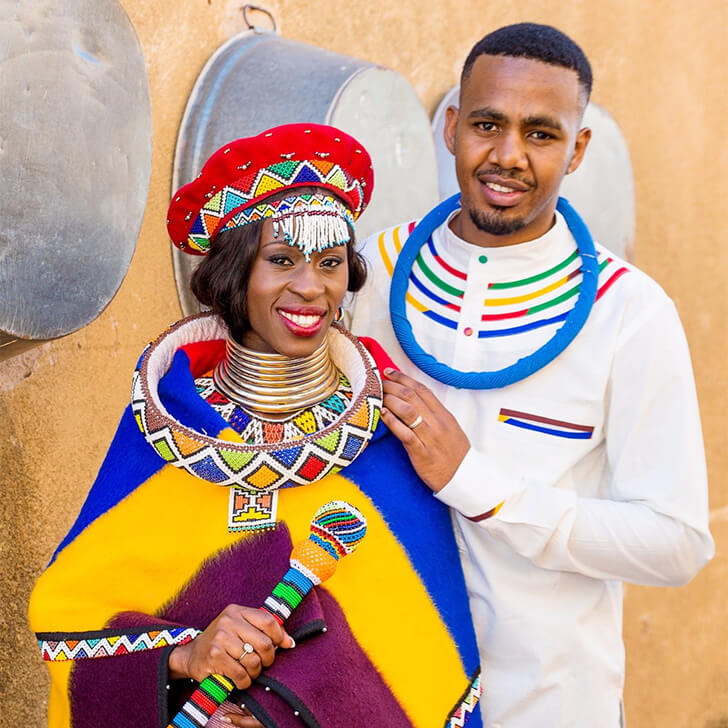
The Kayan Lahwi aren't the only tribe that has a thing about neck rings. Another tribe in Africa also has a tradition of wearing them, which seems like a replacement for a wedding band. The South Ndebele people have a tradition of giving women neck coils to symbolize their nuptial vows.
These accessories are only meant for married women to wear and are given to them by their husbands at their nuptial ceremony. These will stay on the wife until the day their husbands die. Though, these are not meant for modification or body modification and are just a symbol of marriage.
The Rebellion Of The Youthful Lahwi

Women in the most populous Kayan Lahwi areas have followed in Sydney Smith's footsteps and decided to move away from this long-standing tradition. This was in the Mae Hong Son region between Thailand and Myanmar. This was mostly down to exploiting the culture, which also limited their freedom.
Girls from the area started removing their rings in protest and continued pursuing education. Some women who have worn their neck coils for 40 years removed them. This also provided a research opportunity, as they could describe what it felt like without them on. They spoke of discomfort that eventually disappeared after about three days.
A Wavering Trend
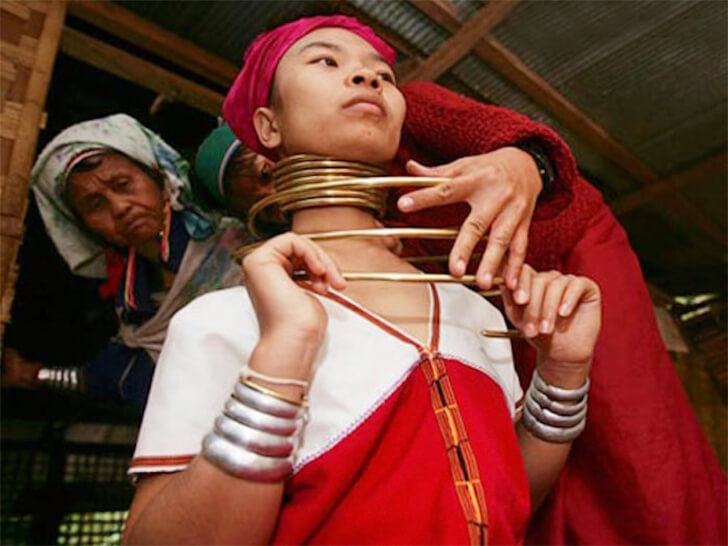
Myanmar has the largest Kayan Lahwi population globally, but it is also a developing country looking to become on par with the rest of western society. This is why it started discouraging the neck ring tradition among its Kayan Lahwi people because they feel it makes the region look backward.
This led to many women disregarding the rule and not following the tradition or allowing their children to do it. It continued to flourish with older and younger women in the more rural and remote tribal settlements, where the tradition held firm despite the changes encouraged by the local government.
A Pretty Good Tourist Attraction Too

While Sydney Smith never made a plan to visit the Kayan Lahwi people she was so fascinated by, many other people have done so as part of their tourism package. In fact, these wo men with the rings around their necks have become quite the attraction for tourists worldwide.
This is why, even in the face of the government trying to get rid of the tradition to fit in more with western culture, the trend has actually still held firm. This was evident in Thailand, where the practice gained popularity with locals due to the tourism money being brought into remote villages.
Gaining Recognition For her Neck Obsession
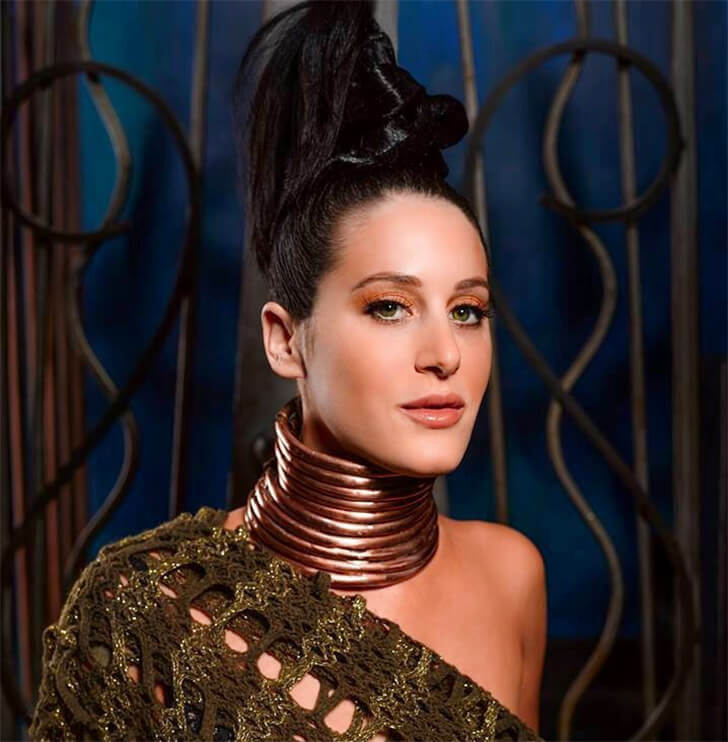
Fast forward to her adult life, and by the age of 30, Smith, who resides in Los Angeles, California, made her name as a marketer and entrepreneur. But she had also started gaining recognition for the unusual coils she had around her neck. It was both eye-catching and recognizable.
For five years, she wore the rings around her neck, and she had accumulated 15 coils over the period. She was proud of it, and it was giving her recognition, but was she willing to make this her calling card for the rest of her life? She would discover this to be her biggest challenge.
With Recognition Comes Fame
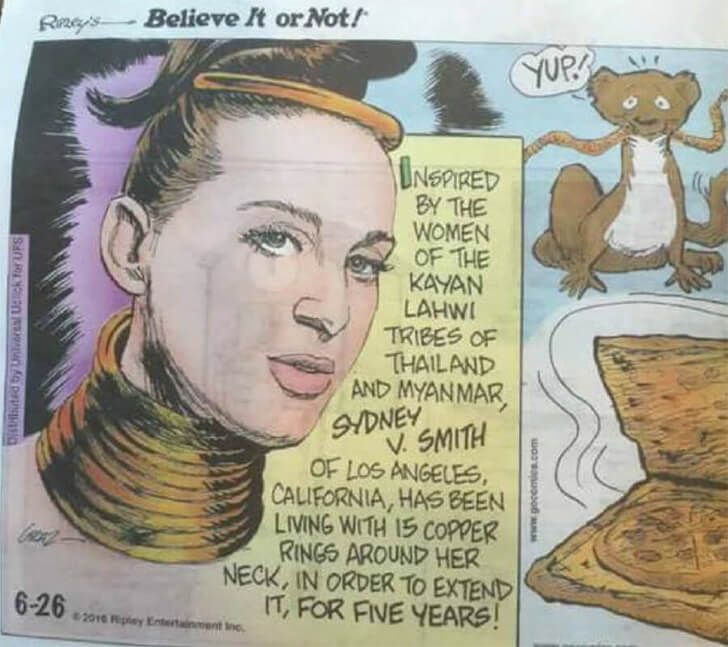
Of course, in the east and Asia seeing women with long necks and coils wrapped around them is not uncommon. But in the Western World, this is one of the strangest things that could come to be. So imagine how people in Los Angeles reacted to seeing a woman with these rings around her neck.
But she gained plenty of attention, which was helped by her sharing her progress on social media. She gained a huge following and eventually grabbed the attention of the mainstream media. This led the popular show "Ripley's Believe It or Not!" to dedicate an episode segment to her.
Not Everyone Loved It Though
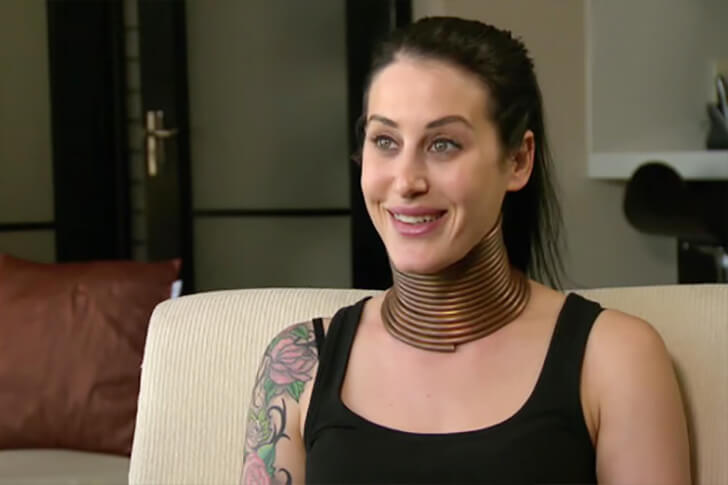
There were plenty of people who supported Syndey Smith and were amazed and impressed by what she was doing. As more and more people took note of her social media posts, plenty of doors opened for her, including modeling gigs and celebrity appearances. But this doesn't mean everyone was impressed by it.
As with anything where people gain public attention, some will try to break that person down. It was no different for Smith, with people jumping on her back about exploiting the culture and chasing fame. Some would say she should have just ignored them, but it got to her slightly.
The Binding Of Skulls
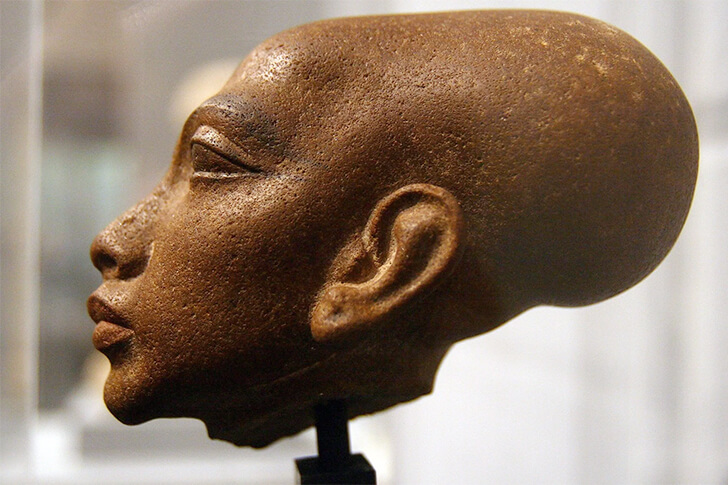
If you think heavy rings around your neck are extreme, wait until you get a skull binding load. This was practiced as far back as 45,000 BC in Iraq, but there has also been evidence of it still being done in the early 1900s in France.
There is no clear reason for this being done, although it's believed that in France it was done to bind and protect the baby's head from impact. This was done soon after childbirth, when the skull is at its most pliable and easy to manipulate. Shapes include flat, conical, round, and elongated ones.
They Even Did It In Ancient Egypt
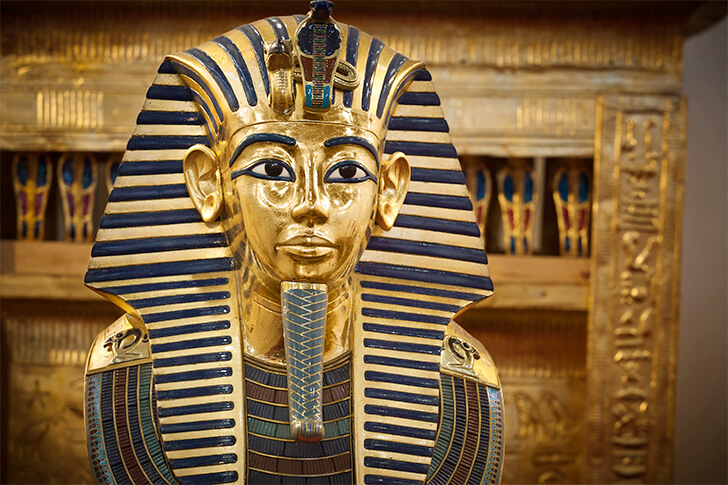
Skull binding is even linked to ancient Egypt. Of course, it was something practiced worldwide, including in places like North and South America, Africa, Europe, Asia, and Australia. But in Egypt, it has been linked to the head shape of a Pharoah dynasty, although several Egyptologists have overlooked this.
The Pharoah line in question starts with the famous queen Nefertiti and her six children, including the Pharoah Tutankhamun. All of them had oblong-shaped heads, and while this has been linked to an inherited symptom, with the wide distribution of skull binding, it could be that it was also present in ancient Egypt.
The Rings Became Her

When she started gaining fame, it was exciting, and of course, all of the opportunities made it worth her while. But as time went by, she started to resent her celebrity status, especially with all of the public attention she was getting. It was especially difficult when she was out in public.
She would get recognized, and people would approach her out of nowhere while she was doing her daily tasks like grocery shopping. Most people also were more interested in her rings than her, and she couldn't even engage in regular outdoor activities like hiking or riding a bike.
The Pain of Being Isolated
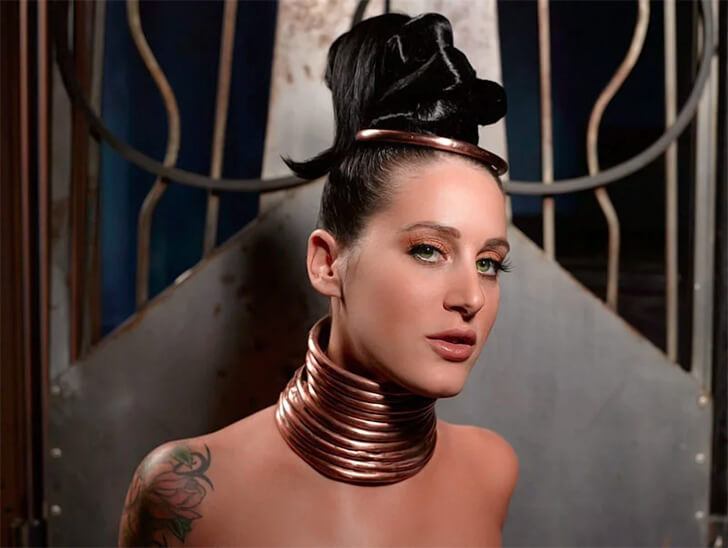
Although she was landing modeling and appearance jobs, she still needed a day job. Sydney took a job in a restaurant kitchen to avoid so much interaction with people. This was no good for her neck, with the heat in the Kitchen proving problematic for her to handle.
Despite the excitement the rings had brought into her life, she was having difficulty moving. Because of this lack of mobility, she found it difficult to hold down a job, and it was also affecting her love life. Guys were either more interested in what was around her neck or wanted her to remove them.
The Truth About How The Rings Work
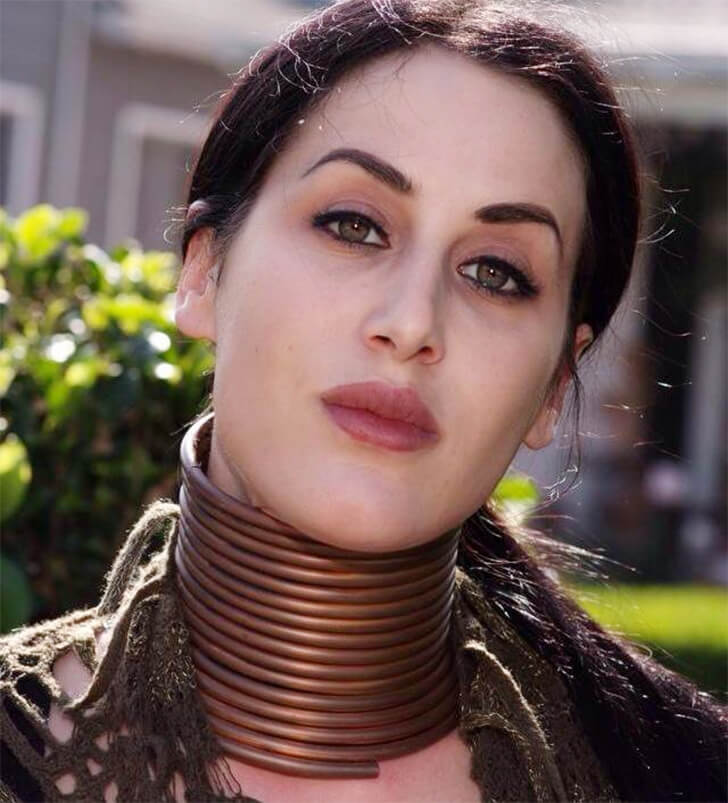
While the common belief is that the rings stretch the neck, this is far from the truth. It may look like it is getting longer, but the weight of the coils weighs down the collar bones, which in turn compresses the rib cage. This could be extremely uncomfortable.
This also means that, instead of it being elongated, the clavicle's deformation causes it to appear longer. The neck doesn't get any longer at all, but the illusion is created because the head remains where it was while the clavicle. So was it worth the discomfort for Sydney Smith to have these accessories for the sake of a childhood dream?
An Expert Opinion
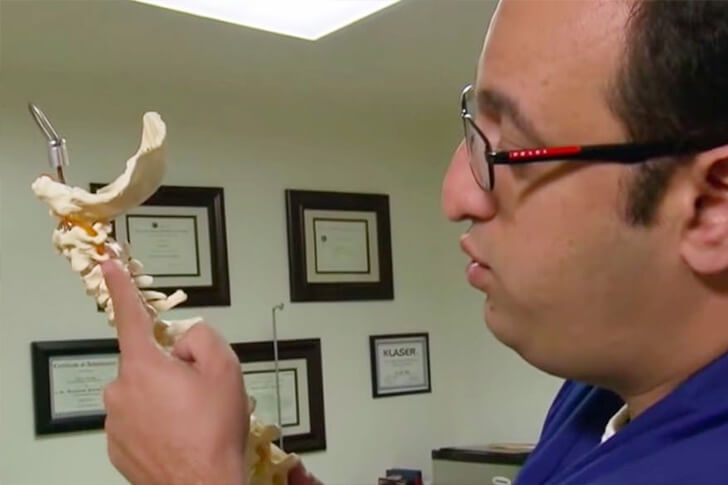
One doctor believes it is pretty dangerous to wear these rings. An orthopedic surgeon from California, Dr. Jonathan Nissanoff, says that wearing these accessories could be bad for the neck health of the person doing it, especially if they start when they are older, unlike the Kayan Lahwi, who begin when they are young.
The doctor says that because the women in the tribe start at a young age, they still have time to grow into the coils, with their bodies adjusting according to the shape the accessory creates. But Smith began her journey late in her life, meaning she could have damaged her body.
The Binding Of Feet

Foot binding was practiced in China over a thousand years ago and is known for creating a particular shape of the foot which is named lotus feet. This foot shape is specifically meant for shoes known as lotus shoes. It's said this started with a famous dancer before the elite took a taste of it.
It's a pretty gruesome method as well and requires the feet to be broken, shaped, and then bound to create the desired shape. The Chinese government eventually banned this in 1912 after noting the ill effect it had, and several intellectuals branded the practice as backward.
Why Go Through These lengths For A Foot Shape
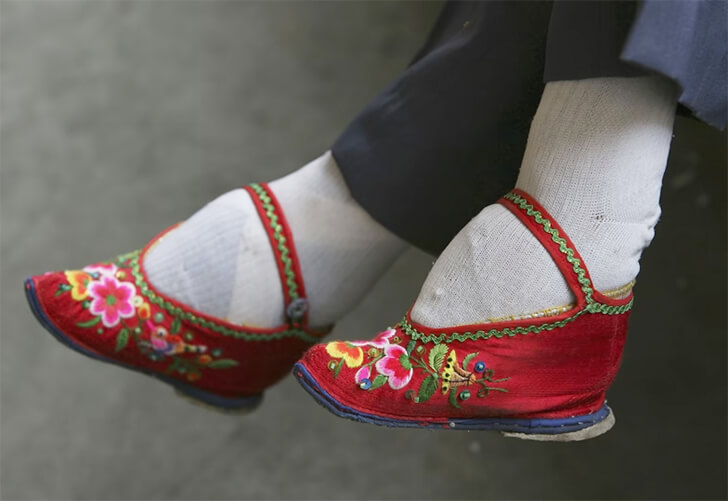
There are two prevailing reasons for the lotus foot's popularity in Chinese history. Number one is that the smaller foot was seen as more appealing and sensual and hence was something to strive for, regardless of the painful procedure. This is probably why it became so popular with the upper class.
But there is another reason experts believe this was popular. Girls were an essential part of the income of households in China, thanks to their skills in handicraft and spinning. The theory is that by breaking the feet and shaping, girls would be forced to stay home and engage in these household money-making activities.
Could Sydney Smith Rebuild Her Life If She Took Off The Rings

One thing the rings gave Sydney Smith was an identity. With them, she was Giraffe Lady, someone extraordinary who was recognized, whether it was positive or negative. But what she feared was what would happen if she removed them. Who would she be? Just another woman in Los Angeles.
It was getting her down. She came close to removing them on a couple of occasions, but she kept questioning her motives for wanting to do so each time. The critical issue for her now was how she would move on from something she had committed her entire life to since childhood.
Then She Finally Made Her Move
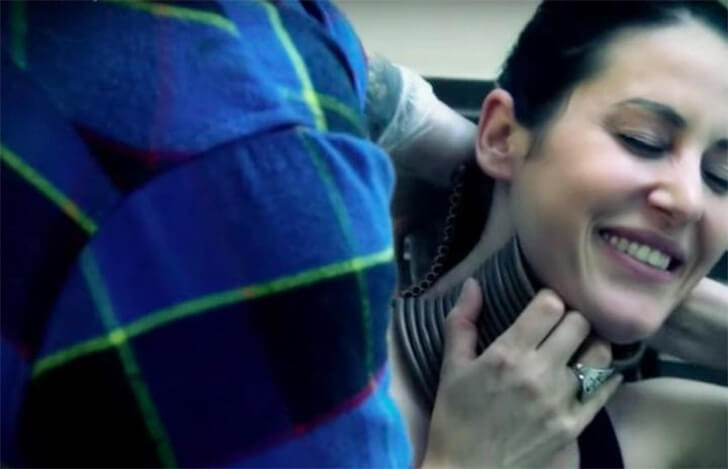
She spent a long time thinking about it and eventually concluded that she had to remove the rings if she would find herself again. She went to the friend who made them for her and asked him to have them taken off from her neck.
It was complicated and tedious and required the use of a chemical to remove the glue that kept the coils together. It was about as difficult as putting the brass twirls on and took about fifteen minutes to complete, but after five years, Sydney finally saw her neck again, and she was pleasantly surprised.
The Damage Done By The Rings

For Kayan Lahwi women, once the rings go on, they hardly ever come off. This is mostly because of the tedium that goes with coiling and uncoiling the brass accessories. Hence, these things are only removed when a new one needs to be put on. But they also cause issues.
One of the main issues is that the neck muscles covered by them get weaker. This can cause difficulty when they are removed. This is probably why most Kayan Lahwi women prefer keeping the coils on. This would also be the case since, having worn them for so long, they feel like part of the body.
Making Life Awkward And Difficult

Being a traditional Tribe, the Kayan Lahwi women become accustomed to living their lives with the rings around their necks. But it could become a significant problem for a city dweller in Los Angeles. Sydney Smith proved and explained that her accessories could make city life pretty uncomfortable.
While the coils were a childhood dream of hers, she said they were a burden, making it difficult for her to function normally. She did say that perhaps it could work for a trust fund kid who can afford to lay around all day and not have to drive or go out to earn a living.
First Impressions Without The Rings
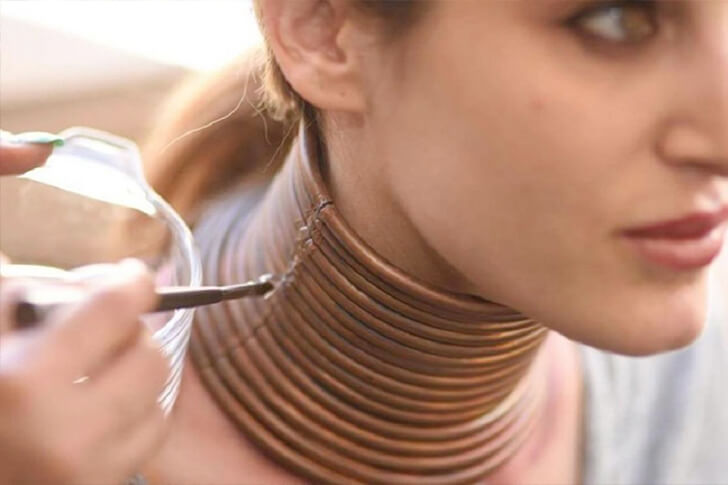
Ironically, her neck looked longer than it was when she originally had the rings put on. But she also had a bruise on her collar bones from the weight of them, and her muscles were weak. She needed to rehabilitate, and she needed assistance to do it.
Although she wanted a longer neck, the after-effect of removing the coils showed how it wasn't worth her while. Luckily, orthopedic surgeons have stated that it will return to its original length over time. She would have to visit a chiropractor to help her gain her muscles back by following a neck exercise routine.
Lucky She Did It At The Age She Did
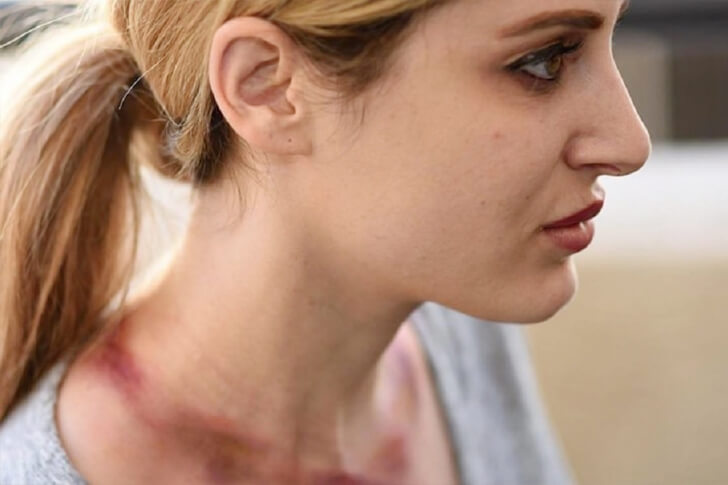
One thing Sydney Smith is lucky for us is that she had her rings put on when she was older. Most Kayan Lahwi women wear the coils from a young age, and as they grow, their bones and skin become accustomed to the weight and shape of the coils around their necks.
Smith started feeling this way as well, but when she was ready to remove them, she could do it, knowing she had already stopped growing. This meant her recovery would be quick since she only really stretched her neck skin, and her bones didn't grow to become accustomed to this setup.
The Most Widespread Version Of Body Modification
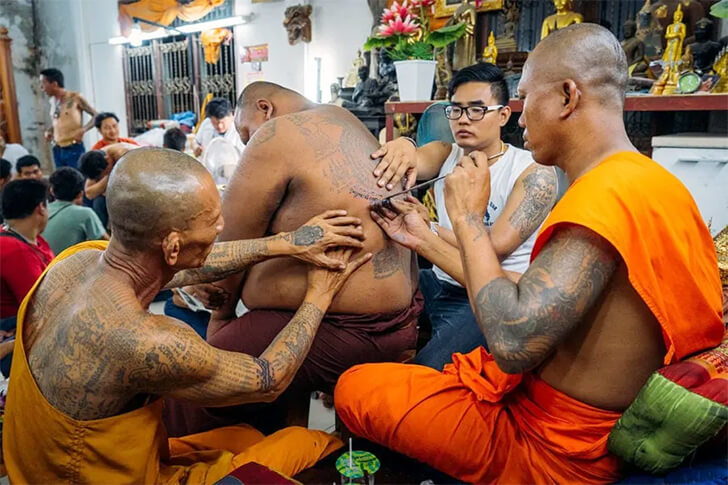
Of all the body modification methods, tattoos and piercings are probably the most commonly seen globally. Anyone and everyone who wanted to make a statement with their bodies or minds would go through either a piercing or body art procedure to make a statement of maturity or tie allegiances to some person or subculture even.
There is no clear origin of tattoo art, but it has become an integral part of the Mauri, Buddhist, and Hindu cultures. One tribe that does go extreme with its tattoo culture is the San Yak, which tends to tattoo entire Buddhist prayers onto people.
The Longest Recorded Neck In History

According to the Guinness Book of World Records, the longest neck recorded in history measured at 15.75 inches. This was achieved through the same brass ring method employed by Syndey Smith. It was also a female member of the Kayan Lahwi tribe that achieved it, although there is no name or date stamp attached to the claim.
What is an intriguing fact is that experts say that a neck that long would not be able to support the head. Hence why the brass coils never get removed. This is probably why Kayan Lahwi women have spent the rest of their lives with them coiled around them.
Brass Coil Stockholm Syndrome
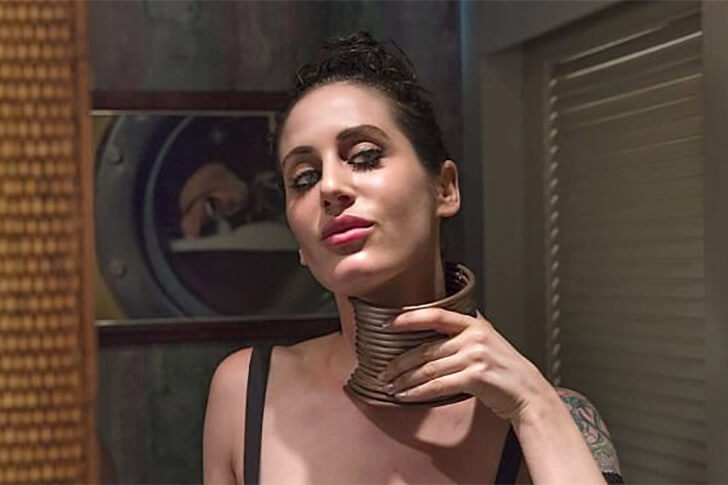
The Kayan Lahwi women become so accustomed to wearing their coils around their necks that many feel like they're losing a body part when considering removing them, and those who do remove them often feel like a piece of themselves has been removed. This is why so many still follow the tradition despite government efforts to eradicate it.
Sydney Smith felt the same way. When she contemplated removing her rings, Smith says she felt strange, as if she was removing a piece of her body. She went through this for six months before finally deciding that her well-being was more important than the long neck.
Still Proud Of Her Achievement

She may have given up on the dream, but that doesn't mean she regrets chasing it. She says that she enjoyed the feeling of the coils around her neck and has no regrets about going after the dream she had. The experience has shaped her and taught her many lessons.
Since removing the rings, she has gotten married and started a family. She has centered her life around her husband and daughter Skyler Rose. She has been looking forward to what life holds for her and also wonders what unique adventure her daughter will choose to pursue. Sticking To Entrepreneurship.
Still Creating Opportunities For Her
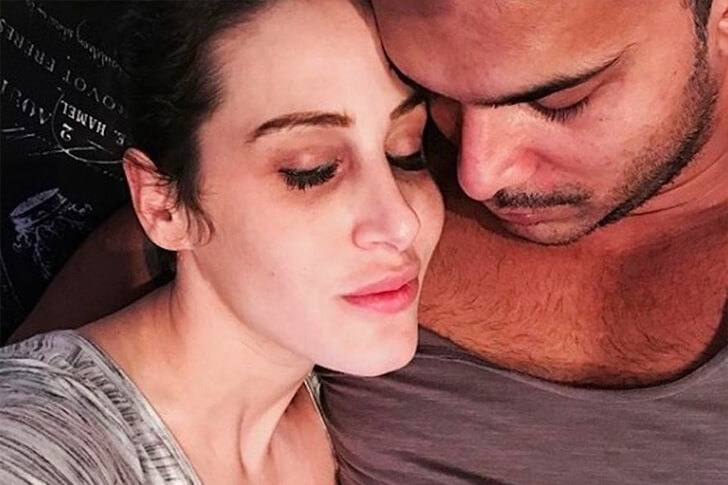
These days Sydney Smith labels herself as a marketer and entrepreneur. She has said that many people have approached her asking where they can get their own coils. She jokes that she may even start her line of "Giraffe Lady Rings," considering the market that has opened up for her.
Having said that, she is serious about entrepreneurship and says that at least the neck rings got her desire for showbiz out of her system. Now that she's focused on her husband and daughter, she is also focusing more on living a stable life with the family she has built.
Still The Giraffe Woman

Despite removing her coils and abandoning her quest for a long neck, Sydney Smith still identifies as the Giraffe Woman. This was her favorite animal since childhood, and just because she doesn't want a neck doesn't mean she can't still build a brand around a Giraffe.
This would likely bring her out of her shell again. She says she became more introverted, primarily because of the unwanted attention paid to the accessories and the fact that she was being ignored while they were the center of the show. Without the rings, maybe she can build the brand around herself now.
Keeping The Rings As A Souvenir

Whenever people go on a trip or journey, the one thing they keep is a souvenir. This is precisely what Sydney Smith has done with her neck coil. According to an article on Huffpost.com, she is keeping her rings in a glass case to remind herself of the time she spent wearing them around her neck.
With a young daughter of her own, she will probably also use it to fuel stories about her youth and cursory tales about body transformation. In the end, this experience has molded her but also gave her a fantastic story to share with friends and family.
Influencer And Proud Business Owner
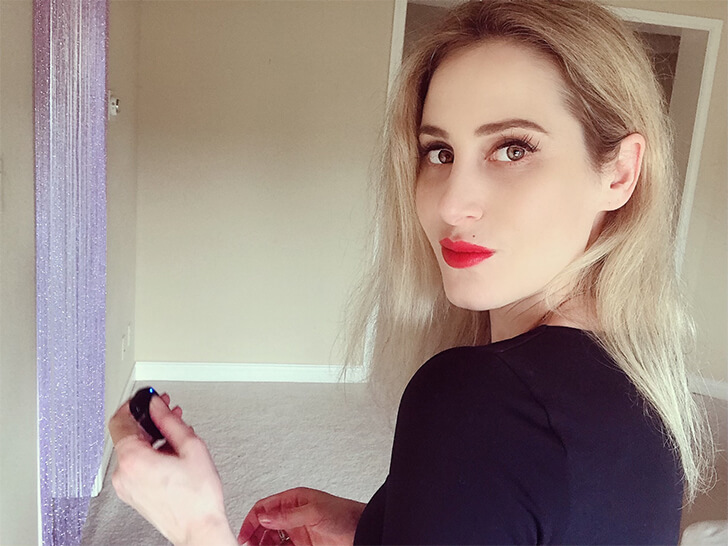
With 157k followers on Instagram, Sydney Smith is classified as a macro influencer. This following has been maintained even after she removed her rings. She has since become a lightworker and candle maker and regularly indulges her follower with posts for her business called Verucaz, where she sells her wares.
The company is dubbed a metaphysical supply store and stocks a range of decorated candles with names like evil eye, rainbow, moon, and self-love relaxation. She also does customized candles along with spiritual protection candles and books. She also blogs on the company website detailing her expertise as a lightworker.
